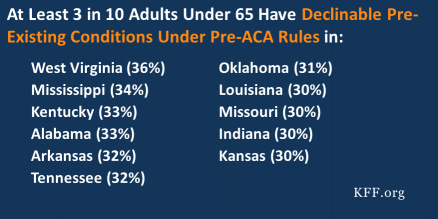His plan was not necessary at all.
1.Anyone who has no insurance can get free medical care at a Federal Community Clinic
Use this to find a clinic near you
2.Many private ins cos cover preexisting conditions. I had 2 different ones during the 1980-90s. Both Kaiser and Healthnet cover PEC. This was before there was Obamacare.
1.Anyone who has no insurance can get free medical care at a Federal Community Clinic
Use this to find a clinic near you
2.Many private ins cos cover preexisting conditions. I had 2 different ones during the 1980-90s. Both Kaiser and Healthnet cover PEC. This was before there was Obamacare.
Last edited:



